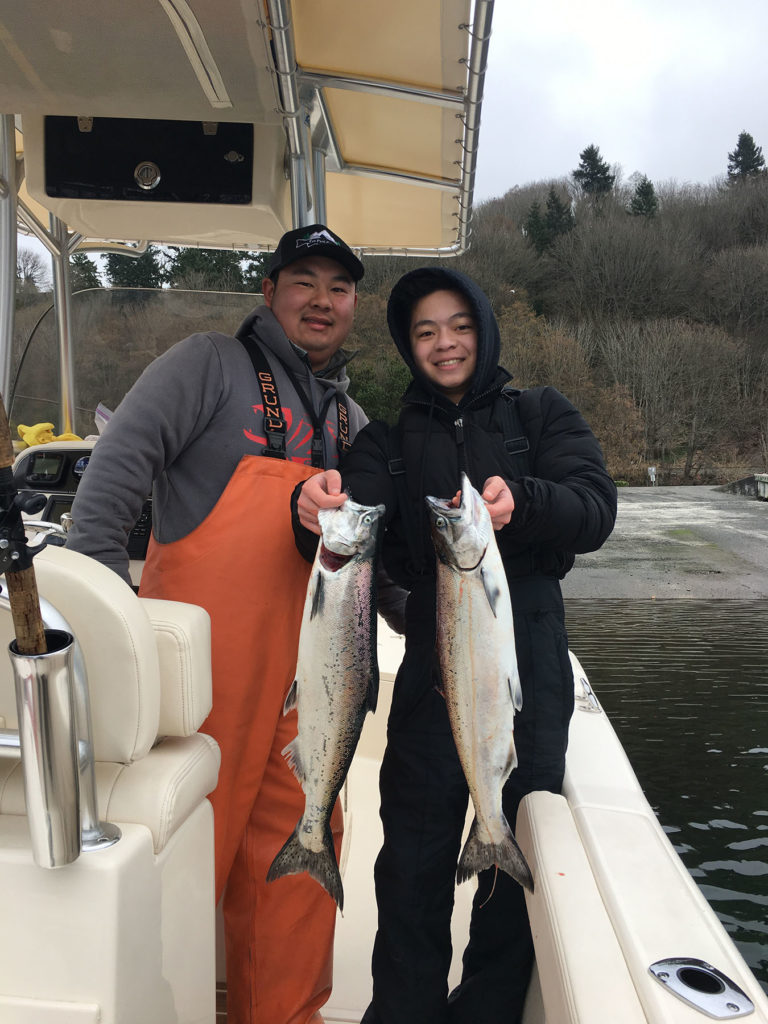
There’s nothing quite like than catching a stunning salmon within sight of the equally stunning Seattle skyline and snow-covered Olympic Peninsula mountaintops. Good news is, avid anglers will get that chance soon as January 1 marks the opening date for hatchery-marked winter chinook in central Puget Sound, albeit on a somewhat leaner three-day-per-week fishing schedule.
After careful consideration of Marine Catch Area—which is located east and west from Apple Tree Cove Point/Edward Point south to northern tip of Vashon Island—the Washington Department of Fish and Wildlife (WDFW) staff decided to move forward with fishing on Saturdays, Sundays, and Mondays only. The daily limit is one hatchery-marked chinook with a minimum size limit of 22 inches. The fishery will close on March 31 or sooner if one of the management criteria are achieved.
The change comes after the 2021 season in Area 10 opened on January 1 and lasted a mere 18 days as the unmarked wild chinook were gobbled up quickly. WDFW feels comfortable that controls set forth in 2022 are improved with a total chinook encounter of 8,475 compared to that of just 3,715 in 2021. “With that many encounters, we have quite a bit more wiggle room than we did last year,” said Kirsten Simonsen, the WDFW Puget Sound salmon manager.
The fishery will be closely monitored and there will also be weekly updates beginning January 10 to grasp a better estimate of catch data. If WDFW sees a big increase in any of the in-season data, then changes could occur to extend the fishery for as long as possible. In other words, the chance of an early Area 10 closure is possible, thus plan to get out to fish sooner rather than later.
Historically, WDFW statistics show winter salmon fishing at times can be just as productive, if not better, than the summer. The majority of winter chinook are delay released from local hatcheries, and spend their entire lives in the fertile waters of Puget Sound gorging on herring and candlefish, their primary food source. These winter fisheries target abundant hatchery-produced salmon while protecting wild stocks of concern that must be released.
Locating baitfish schools is by far the most important factor to catch salmon as their brains are wired to be voracious feeders of herring, candlefish, and other small crustaceans. Chinook often stay near or right around the bottom preying on feed so keeping your presentation bouncing right in front of them will likely lead to more hook-ups. The three commonly used fishing techniques are trolling, drift “mooching,” and jigging. Downrigger trolling is best since you can cover a lot of ground especially in the winter months when baitfish schools can be sparse. A variety of plastic squids, spoons,plugs or a cut-plug or whole herring along with a flasher or dodger works best and be sure to keep your presentation right off the bottom. Drift or motor mooching with a whole or cut-plug herring is an “old school” way to catch fish, and consists of working your bait from the surface down to the bottom. Or, try jigging with a 3- to 6-ounce lead-head style jig. Make sure to take off the store-bought illegal treble hooks and replace it with a barbless style hook.
During the past four-plus decades, I’ve learned a lot about where to fish during the winter in these protected marine waterways we call home. In the February issue we’ll look at another salmon fishing alternative in southern Puget Sound. In the meantime, I’ll see you on the water!


